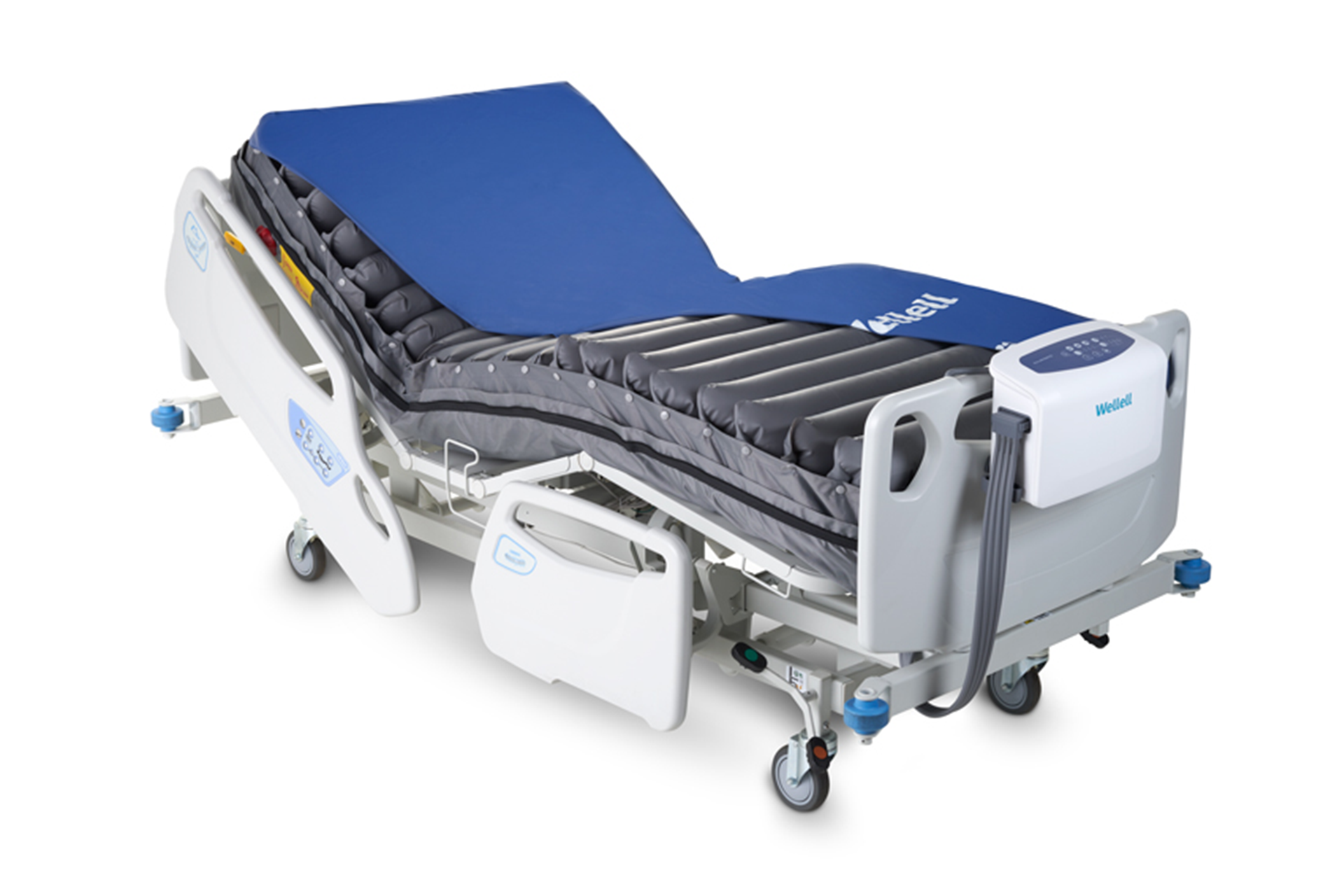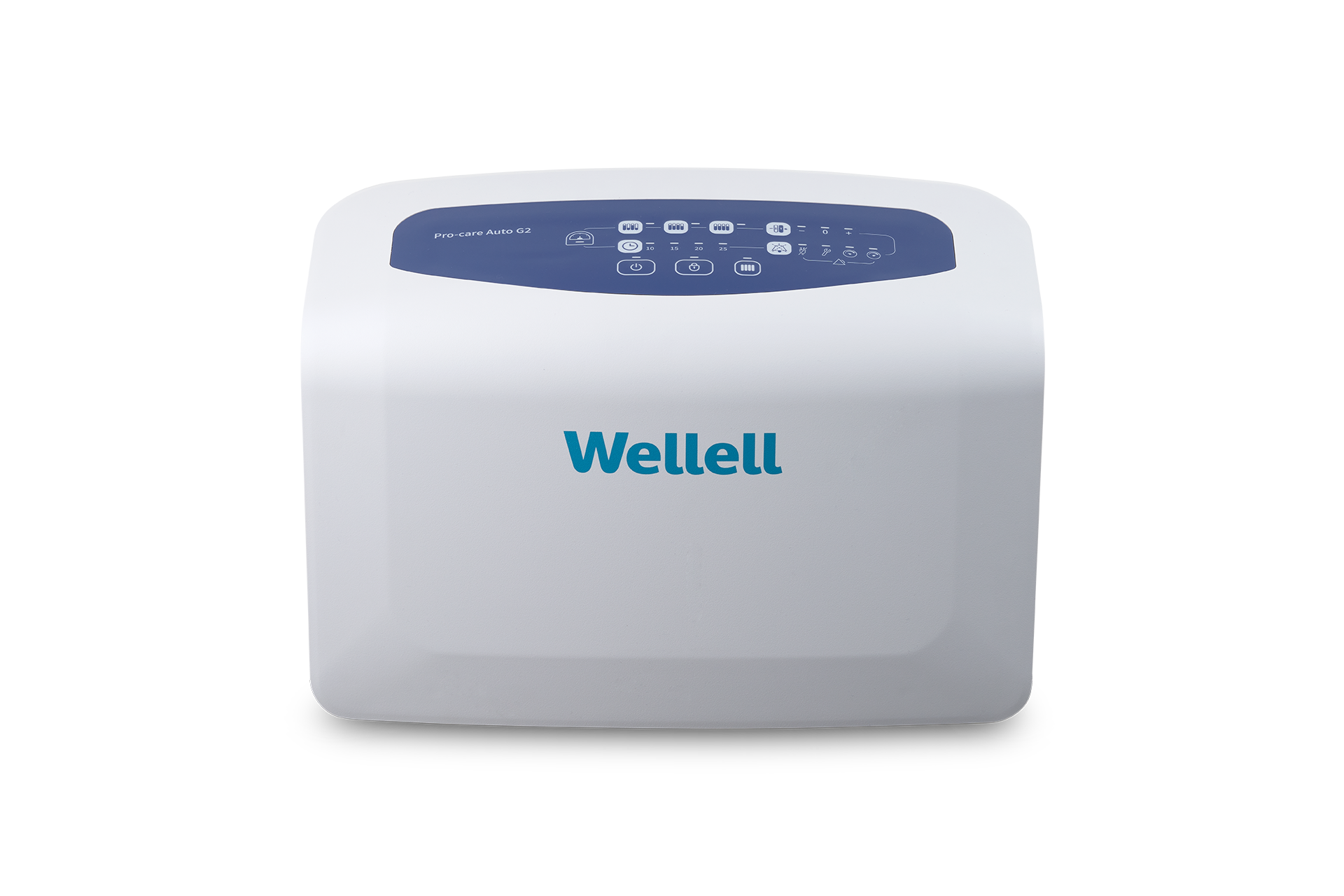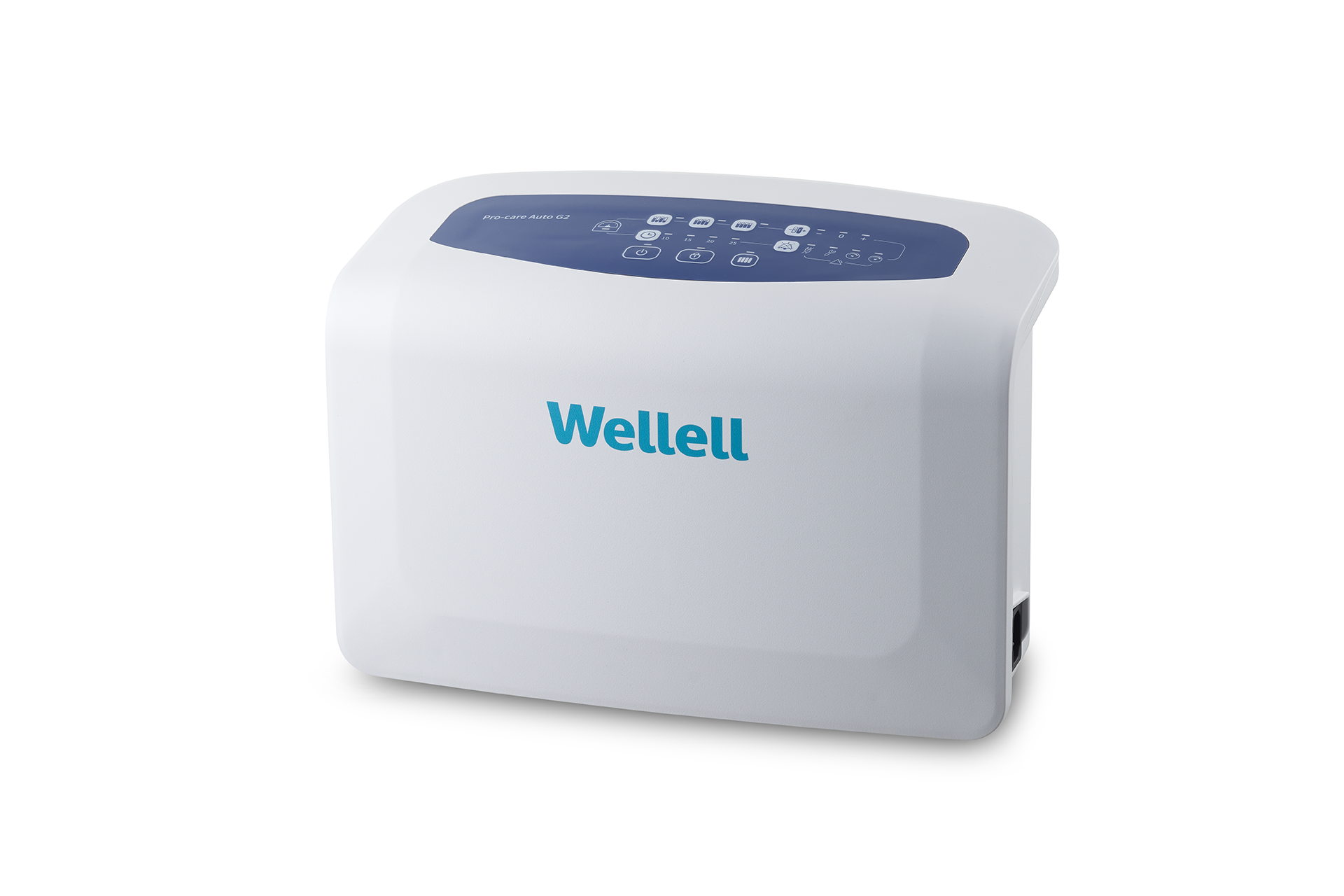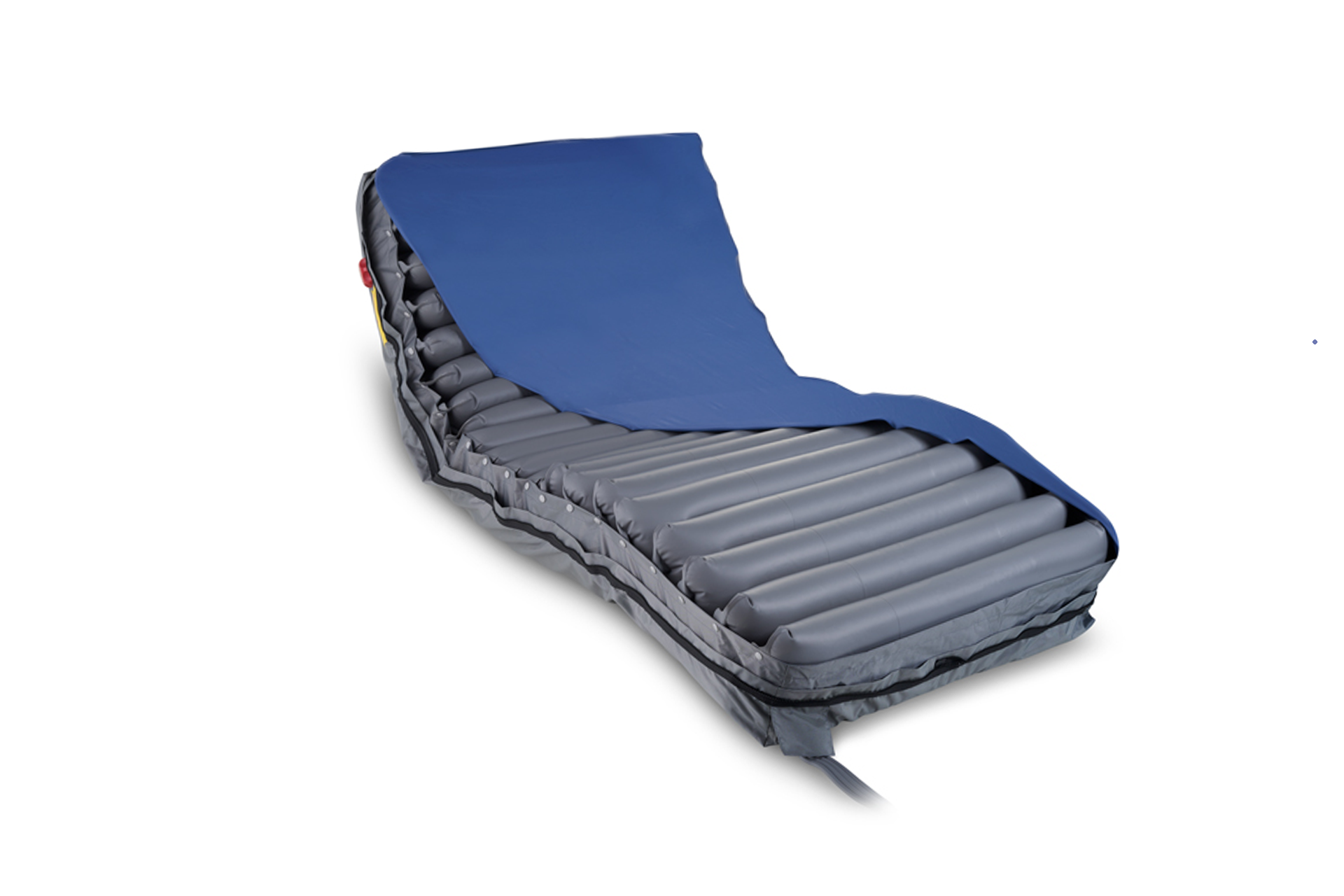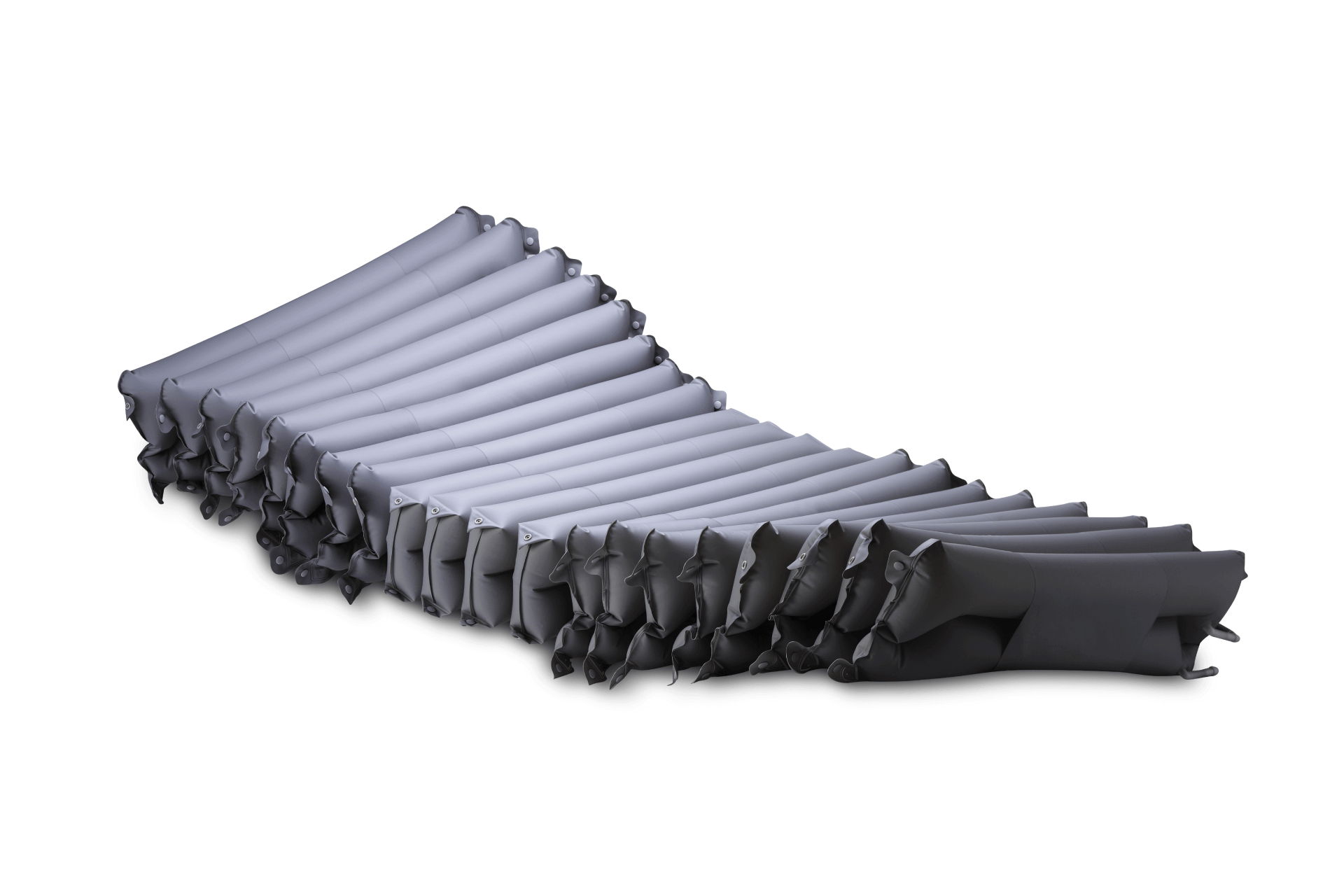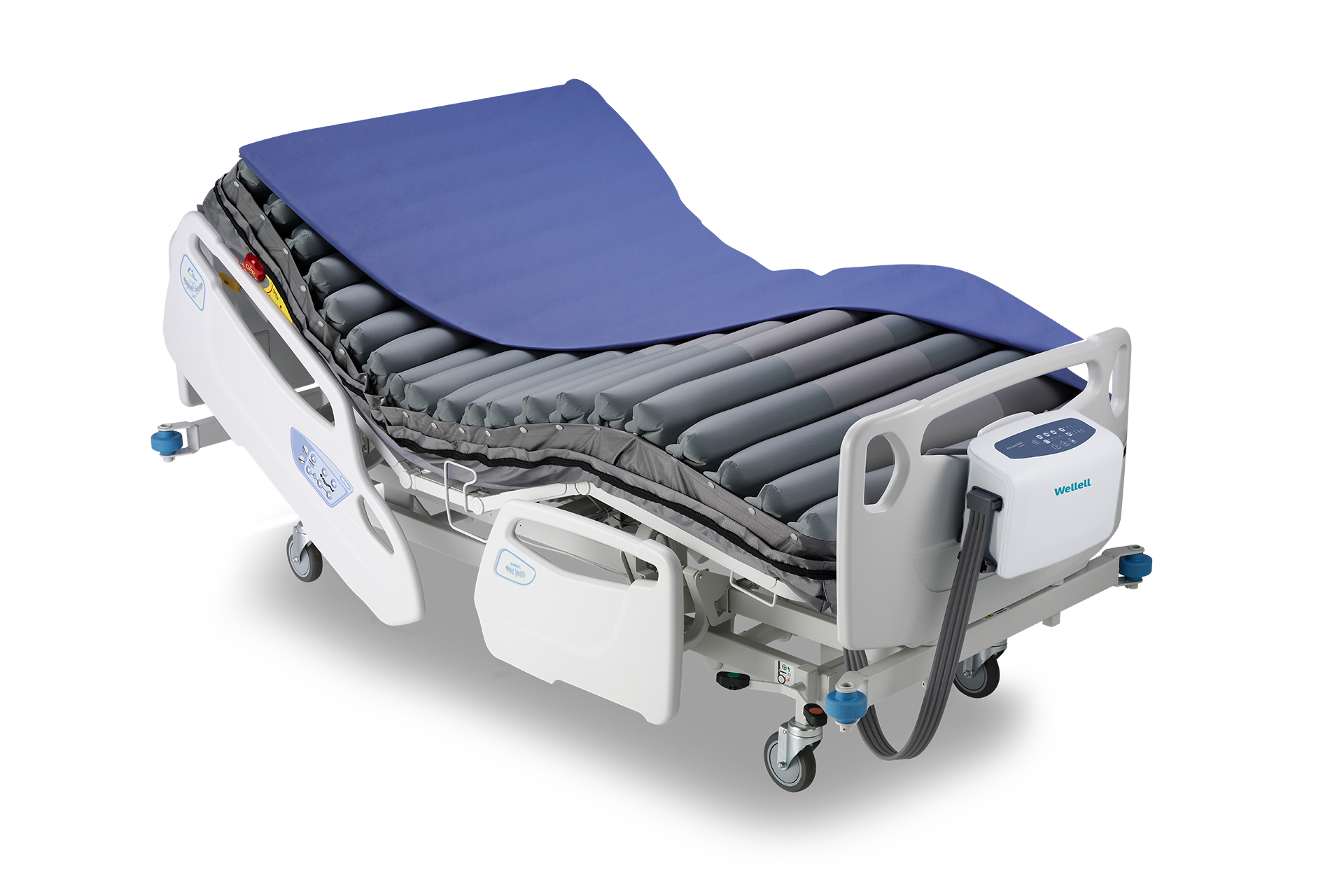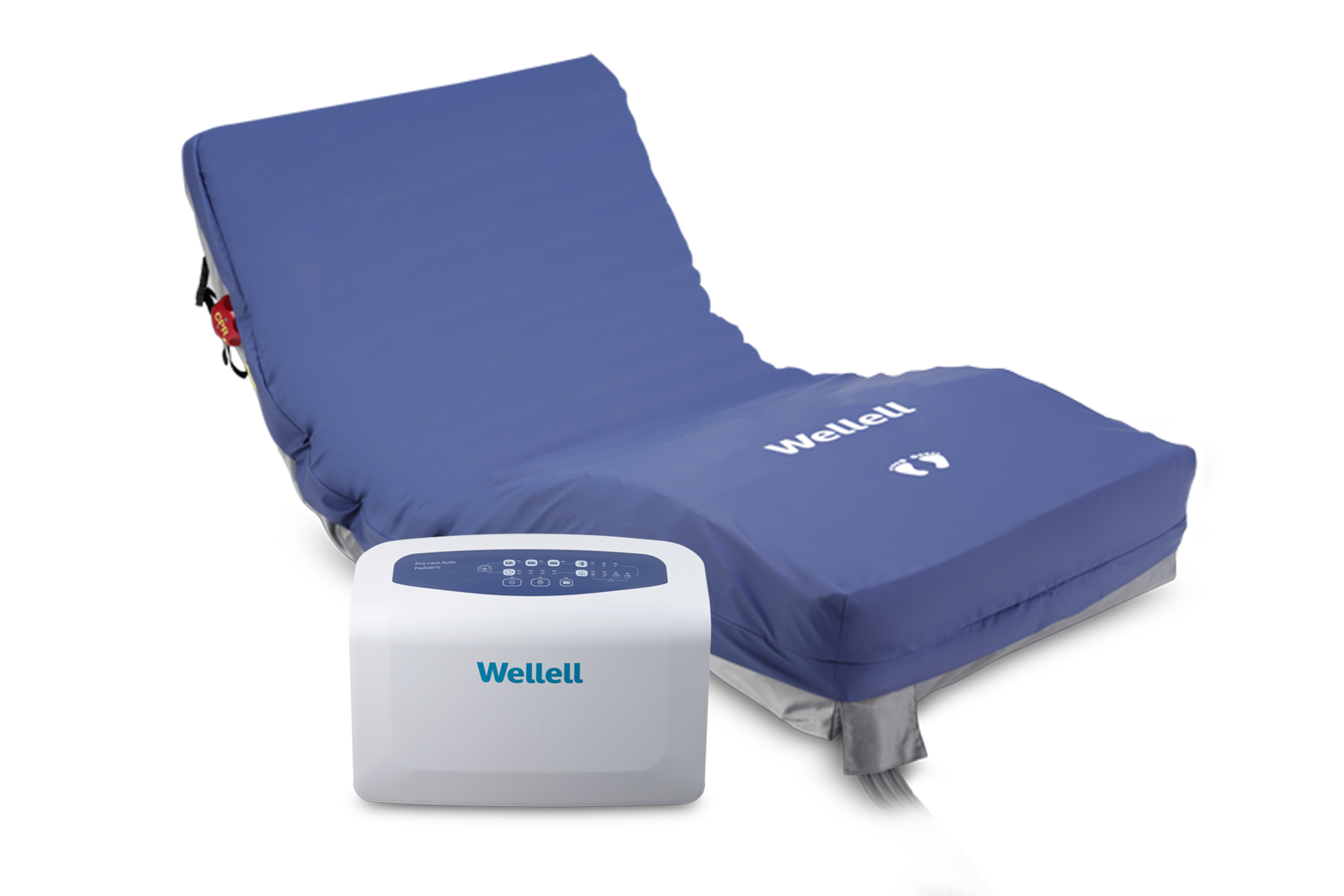Pro-care Auto
For High to Very High Risk
Pressure Injury Prevention Solution for Post-Acute Care — Inflating quickly to optimize pressure relief for sensitive patients.
Abbreviations: PI, pressure injury; S/C I & II, Stage/Category I & II.
Globally, over 50% of hospitalized adult patients require additional care and hospitalization due to developing early-stage PI (S/C I, intact skin, redness; S/C II, partial skin loss, pink wound) around the sacrum, heels, and hips. PI significantly increases patients' mortality rate and financial burden.1-3
Treating PI in surgical and critical-care patients increases caregivers' workload by 50%, with each PI adding 1.4 nursing hours per patient day. Immobile and unhealthy patients are prone to developing large-area PI that worsens quickly, such as the lower trunk, complicating PI prevention.1,4,5
Pro-care Auto improves caregivers' efficiency and care quality by inflating in 20 minutes (dual compressor) and automating mattress firmness based on patients' weight. It provides a more subtle alternating pressure relief for hypersensitive, immobile patients. Ideal for hospitals and post-acute care.
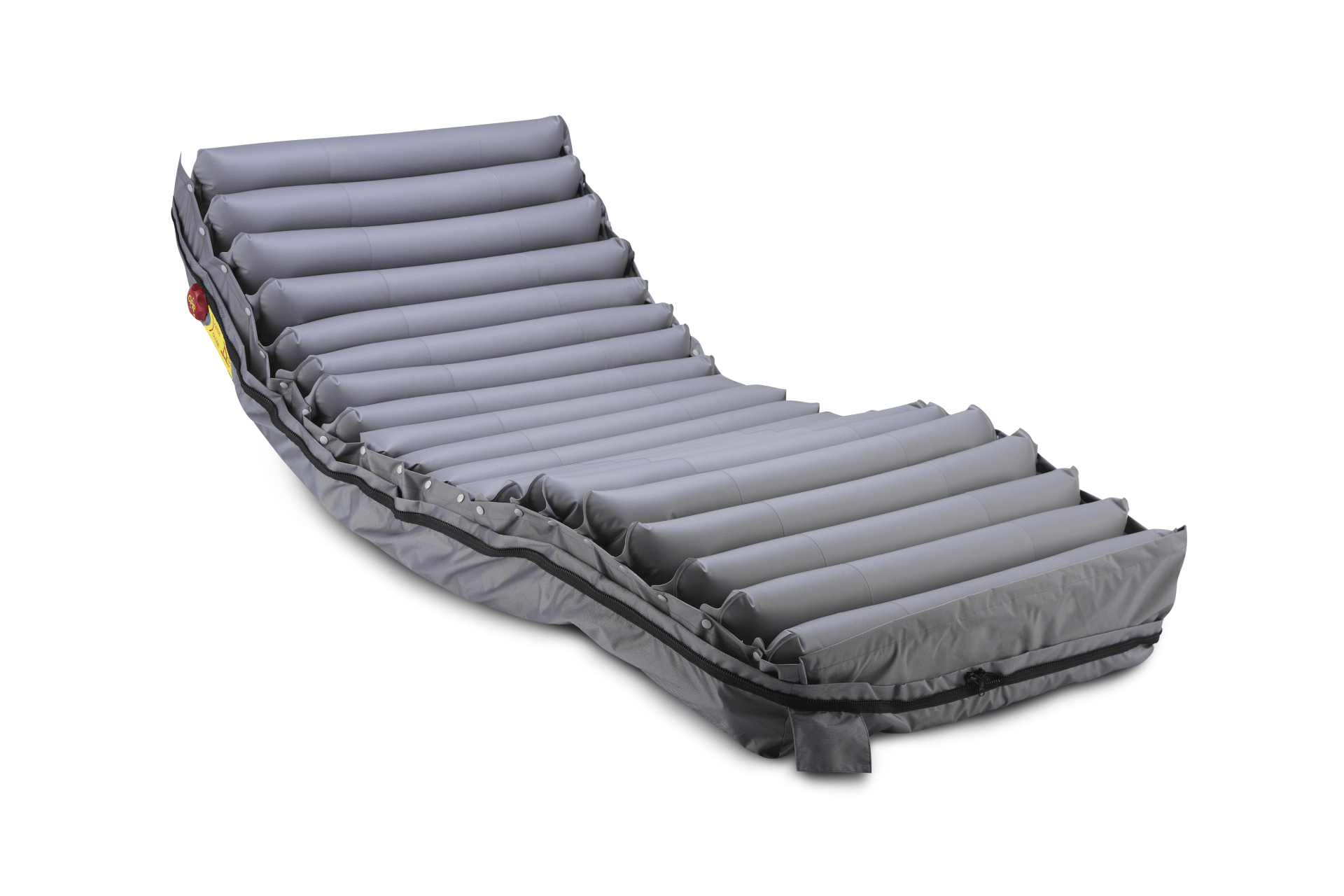
Auto-adjust support surface firmness
- Suitable for improving pressure injuries in in-hospital and care facility patients.
- Additional air cells under pressure-setting-controllable air cells maintain sufficient firmness to prevent patients from bottoming out.
- Alternating Low Pressure mode for an even higher comfort level for patients.
- Dual compressor system silently inflates the mattress in 20 minutes.
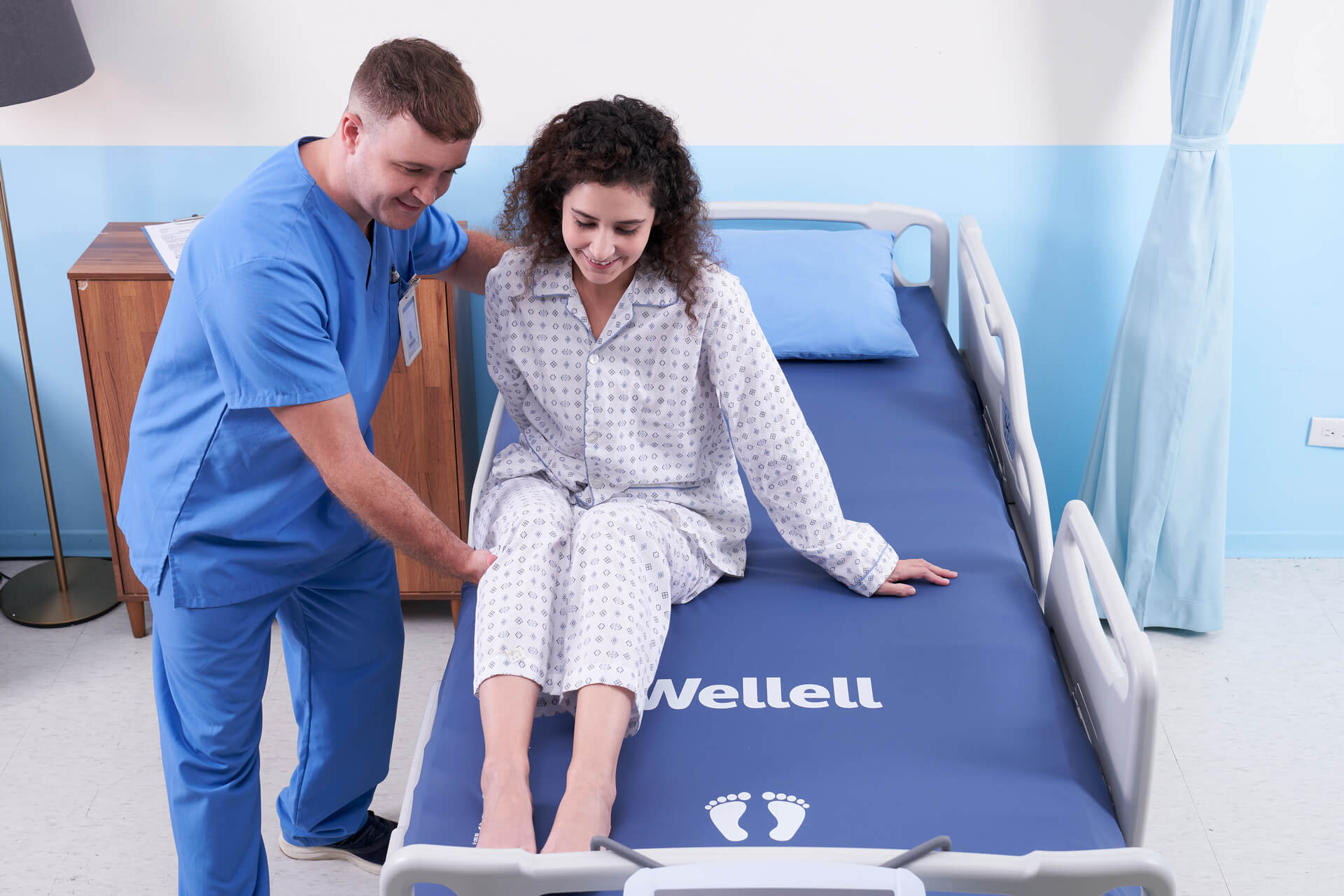
Proprietary pressure sensing technology automates the pressure setting process and eliminates manual intervention.
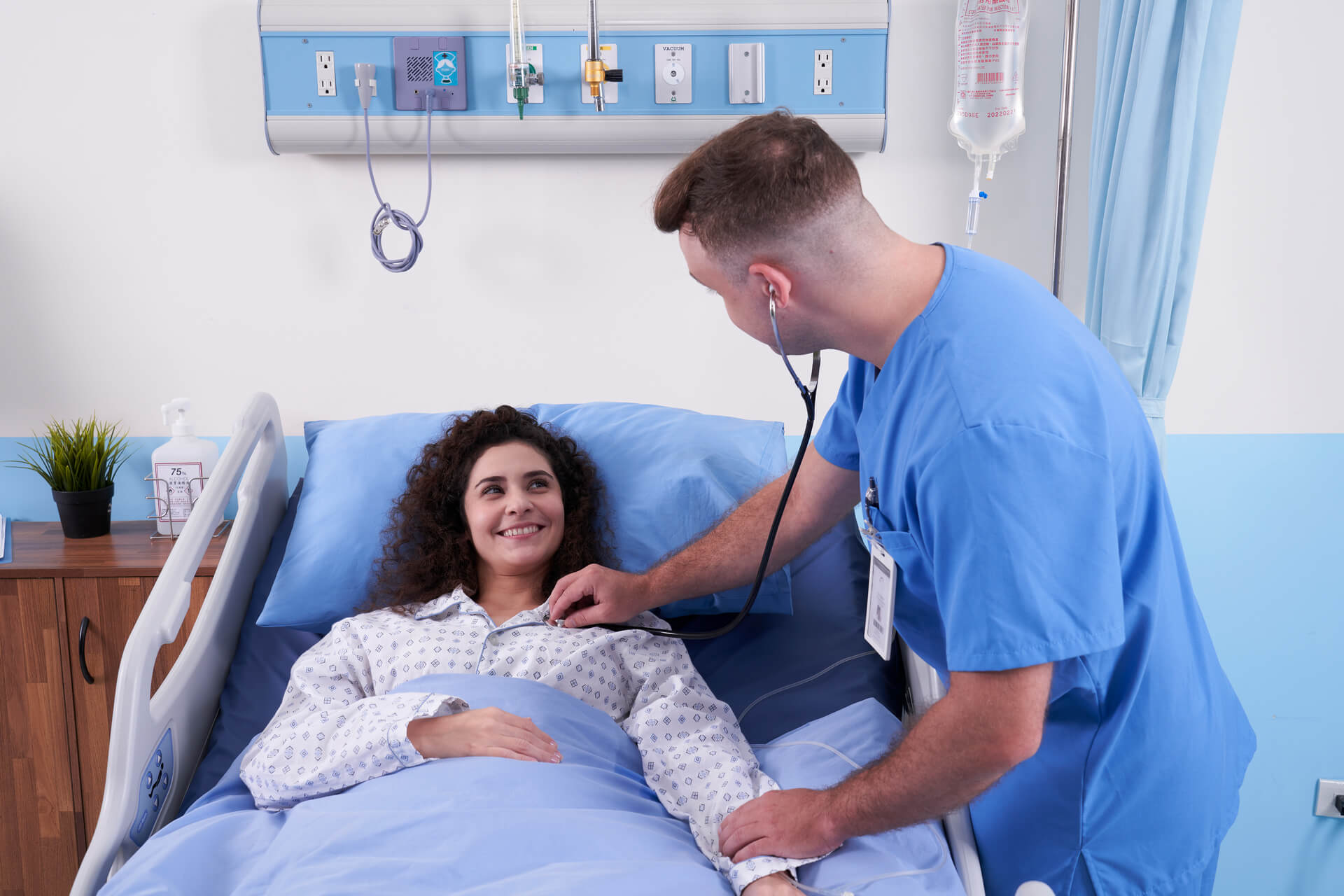
Pump's dual compressor inflates the mattress in 20 minutes, improves usage hours, and operates below 20 dBA.
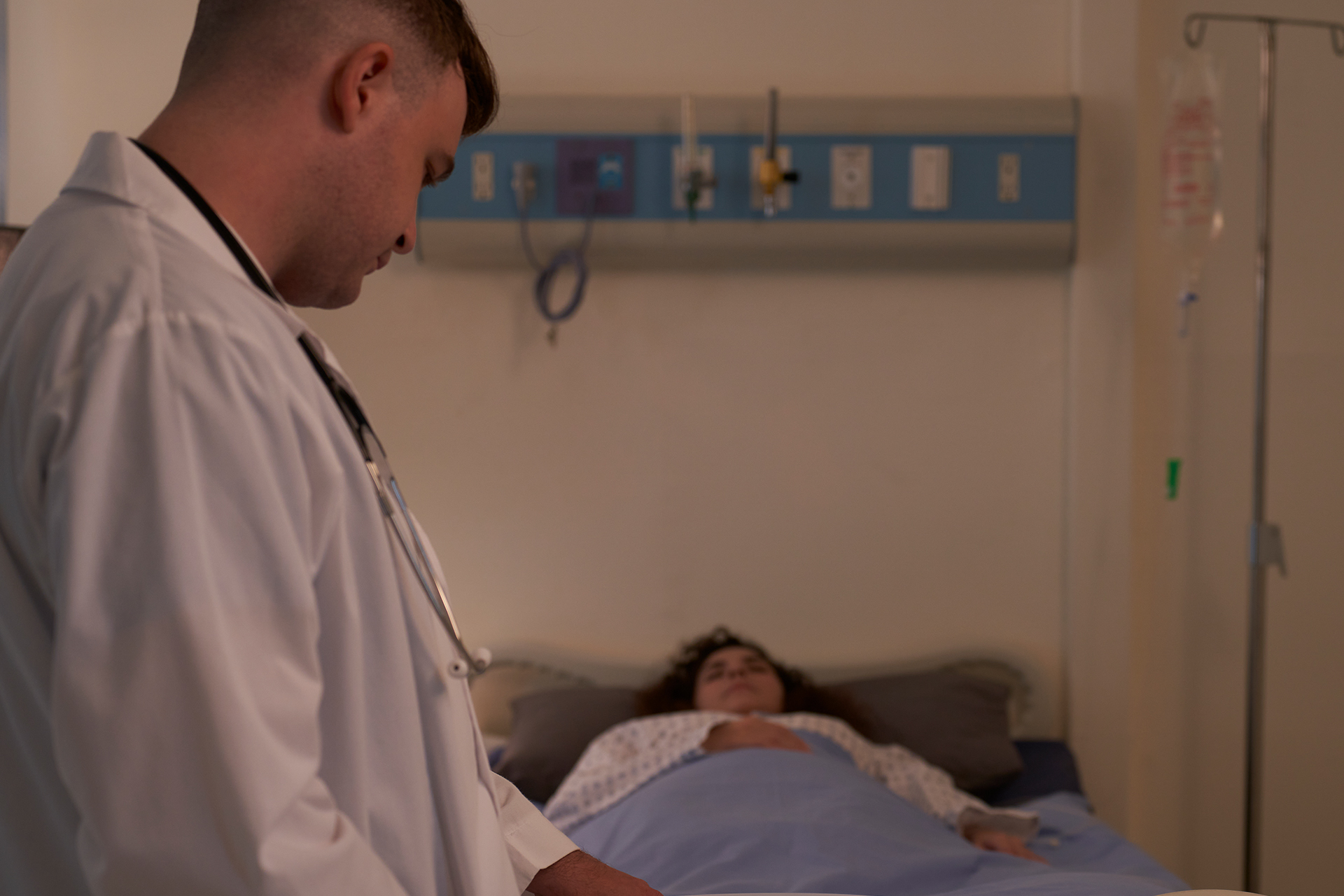
Sleeves structurally reinforce each air cell, optimizing pressure distribution, postural stability, and patient safety.
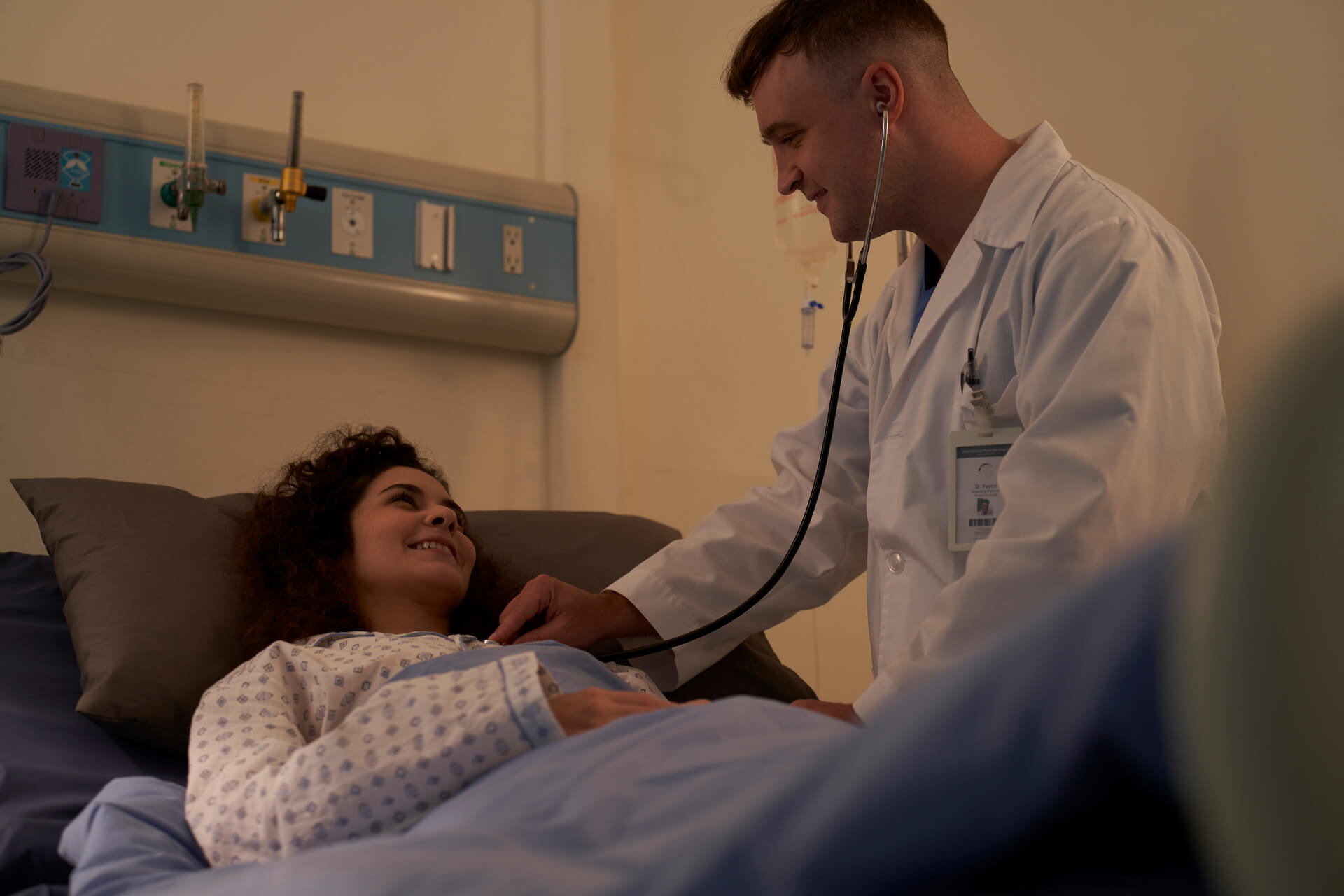
Reduced-pressure-level alternating pressure relief ensures consistent pressure relief care and comfort for sensitive patients.
| Narrow 220 | ||
|---|---|---|
| Mattress Dimension | 86.6 x 31.5/33.5 x 8 in | 2200 x 800/850 x 203 mm |
| Mattress Weight | 13 lb | 5.9 kg |
| Maximum Patient Weight | 440 lb | 200 kg |
| Wide 210 | ||
|---|---|---|
| Mattress Dimension | 82.7 x 39.4 x 8 in | 2100 x 1000 x 203 mm |
| Mattress Weight | 13 lb | 5.9 kg |
| Maximum Patient Weight | 440 lb | 200 kg |
| Standard 210 | ||
|---|---|---|
| Mattress Dimension | 82.7 x 35.4 x 8 in | 2100 x 900 x 203 mm |
| Mattress Weight | 13 lb | 5.9 kg |
| Maximum Patient Weight | 440 lb | 200 kg |
| Narrow 210 | ||
|---|---|---|
| Mattress Dimension | 82.7 x 31.5/33.5 x 8 in | 2100 x 800/850 x 203 mm |
| Mattress Weight | 13 lb | 5.9 kg |
| Maximum Patient Weight | 440 lb | 200 kg |
| Narrow 210 | ||
|---|---|---|
| Mattress Dimension | 78.7 x 39.4 x 8 in | 2000 x 1000 x 203 mm |
| Mattress Weight | 13 lb | 5.9 kg |
| Maximum Patient Weight | 440 lb | 200 kg |
| Narrow 210 | ||
|---|---|---|
| Mattress Dimension | 78.7 x 35.4 x 5/8 in | 2000 x 900 x 127/203 mm |
| Mattress Weight | 13 lb | 5.9 kg |
| Maximum Patient Weight | 440 lb | 200 kg |
| Narrow 210 | ||
|---|---|---|
| Mattress Dimension | 78.7 x 29.5/31.5/33.5 x 5/8 in | 2000 x 750/800/850 x 127/203 mm |
| Mattress Weight | 13 lb | 5.9 kg |
| Maximum Patient Weight | 440 lb | 200 kg |

Auto-adjust support surface firmness
- Suitable for improving pressure injuries in in-hospital and care facility patients.
- Additional air cells under pressure-setting-controllable air cells maintain sufficient firmness to prevent patients from bottoming out.
- Alternating Low Pressure mode for an even higher comfort level for patients.
- Dual compressor system silently inflates the mattress in 20 minutes.

Proprietary pressure sensing technology automates the pressure setting process and eliminates manual intervention.

Pump's dual compressor inflates the mattress in 20 minutes, improves usage hours, and operates below 20 dBA.

Sleeves structurally reinforce each air cell, optimizing pressure distribution, postural stability, and patient safety.

Reduced-pressure-level alternating pressure relief ensures consistent pressure relief care and comfort for sensitive patients.
The cover is made with nylon/PU and is vapor permeable, fire-resistant, and water-resistant. See specifications for more details on the fire-retardant standards.
All air cells are made from Thermoplastic Polyurethanes (TPU). It is highly resistant to breaking down when in contact with water (hydrolysis), soft to touch, and minimizes friction and noise during patient movements.
References
- Afzali Borojeny, L., Albatineh, A. N., Hasanpour Dehkordi, A., & Ghanei Gheshlagh, R. (2020). The Incidence of Pressure Ulcers and its Associations in Different Wards of the Hospital: A Systematic Review and Meta-Analysis. International journal of preventive medicine, 11, 171.
- NPIAP. (n.d.). Pressure Injury Awareness Fact Sheet. In National Pressure Injury Advisory Panel. NPIAP. Retrieved November 10, 2022, from https://cdn.ymaws.com/npiap.com/resource/resmgr/npiap_pru_awareness_fact_she.pdf
- Tschannen, D., & Anderson, C. (2020). The pressure injury predictive model: A framework for hospital-acquired pressure injuries. Journal of clinical nursing, 29(7-8), 1398–1421.
- Strazzieri-Pulido, K. C., S González, C. V., Nogueira, P. C., Padilha, K. G., & G Santos, V. L. C. (2019). Pressure injuries in critical patients: Incidence, patient-associated factors, and nursing workload.
- European Pressure Ulcer Advisory Panel, National Pressure Injury Advisory Panel, & Pan Pacific Pressure Injury Alliance. (2019). Prevention and treatment of pressure ulcers/injuries : clinical practice guideline : the international guideline 2019. National Pressure Injury Advisory Panel. (Original work published 2022)

